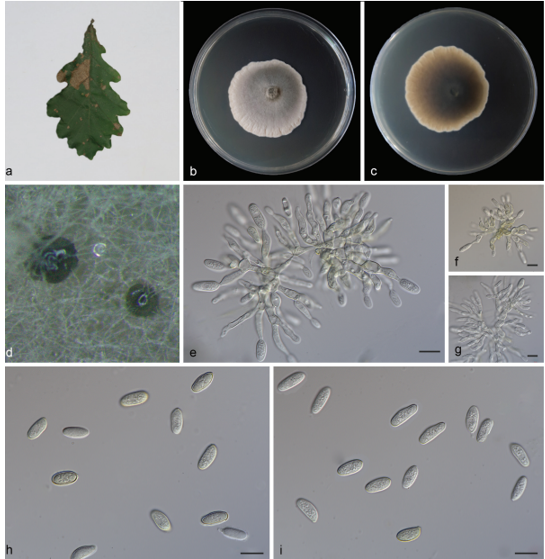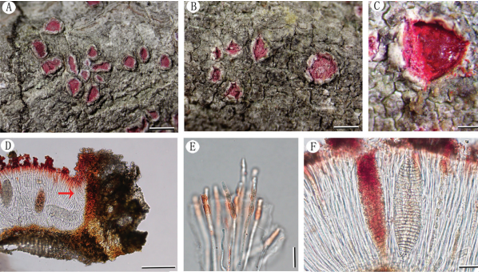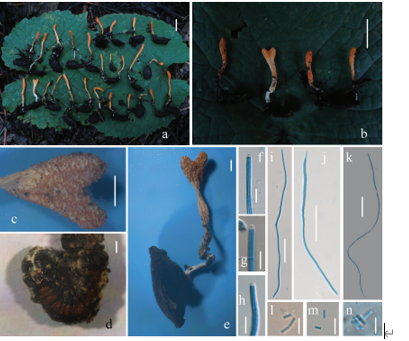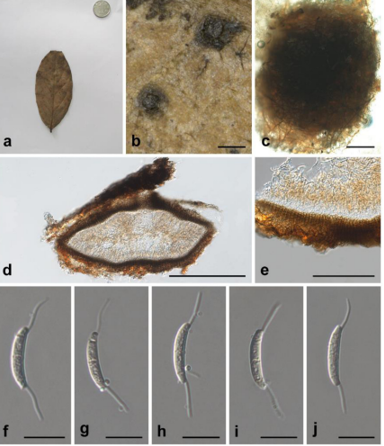Neottiella gigaspora M. Zeng, Q. Zhao & K.D. Hyde 2020
Index Fungorum number: IF556258; Facesoffungi number: FoF 05830
Holotype: CHINA, Sichuan Province, G318, on the ground with mosses, alt. 4215 m, 17 August 2018; Ming Zeng, ZM38 (HKAS 104669, holotype); ibid. (MFLU 19-0523, isotype).
Morphological description
Sexual morph Apothecia epigeous, scattered to gregarious, stipitate. Disc 0.2–0.3 cm high, 0.2–0.6 cm broad, discal to cupulate, orange, hymenium orange, receptacle surface yellow to orange, margin conspicuous, dentate to wavy slightly. Stipe 0.2–0.4 cm long, 0.1–0.2 cm broad, cylindrical, yellowish to white. Medullary excipulum 50–200 µm broad, of textura intricate, yellow, composed of 3–7 µm broad hyphae. Ectal excipulum 60–100 µm broad, of textura angularis to globulosa, yellow, composed of 28–37 × 18–27 μm cells, with long septate hyphold hairs, 6–8 µm broad. Stipitipellis 70–160 µm broad, of textura angularis to globulosa, yellow, comprised of 24–35 × 16–24 μm cells, with long septate mycelial hairs, 5–8 µm broad. Paraphyses 3–4 µm broad, filiform, aseptate, straight, or flexuous slightly at the apex, with yellow content, apex enlarged, 4–7 µm broad, J −. Asci 359–411 × 17–22 µm, 8-spored, subcylindrical to clavate, operculate, inamyloid. Ascospores [20/1/1, in H2O] (27.1–)27.7–31.1(–32.8) × (17 .0–)17.9–19.7(–20.5) µm (Q = 1.46–1.78, Q = 1.57 ± 0.10), broadly ellipsoid, uniseriate, ornamented with verrucose, uniguttulate to biguttulate. Asexual morph unknown.
Habitat: On soil.
Distribution: In China.
GenBank Accession: LSU: MK589293; TEF1-α: MK577716.
Notes: This species is distinguished by the orange stipitate ascomata, yellow paraphyses and broadly ellipsoid ascospores with a warty surface. The phylogenetic tree shows a close relationship with Neottiella albocincta (Berk. & M.A. Curtis) Sacc. (Fig. 47). Across the LSU sequences, there are 33 notable nucleotides including 4 gap-differences among the 845 analyzed nucleotides between N. gigaspora (HKAS 104669) and N. albocincta (PRM 945,796). N. albocincta differs from N. gigaspora in the size of the asci (290–310 × 15–17.5 μm) and ascospores (18.8–23.9 × 12.1–14.5 μm) (De Marchi 2017). N. vivida (Nyl.) Dennis has a paler outer surface, smaller asci (140–175 × 17–18.5 μm) and ascospores (22.46 ± 2.13 × 13.14 ± 1.23 μm) (Stoykov et al. 2015). N. rutilans (Fr.) Dennis has ellipsoid to fusiform spores with reticulate ornamentation (Kullman 2002; Akata and Kaya 2013).
Reference: Hai‑Sheng Yuan1,2· Xu Lu1,2 · Yu‑Cheng Dai3 ·
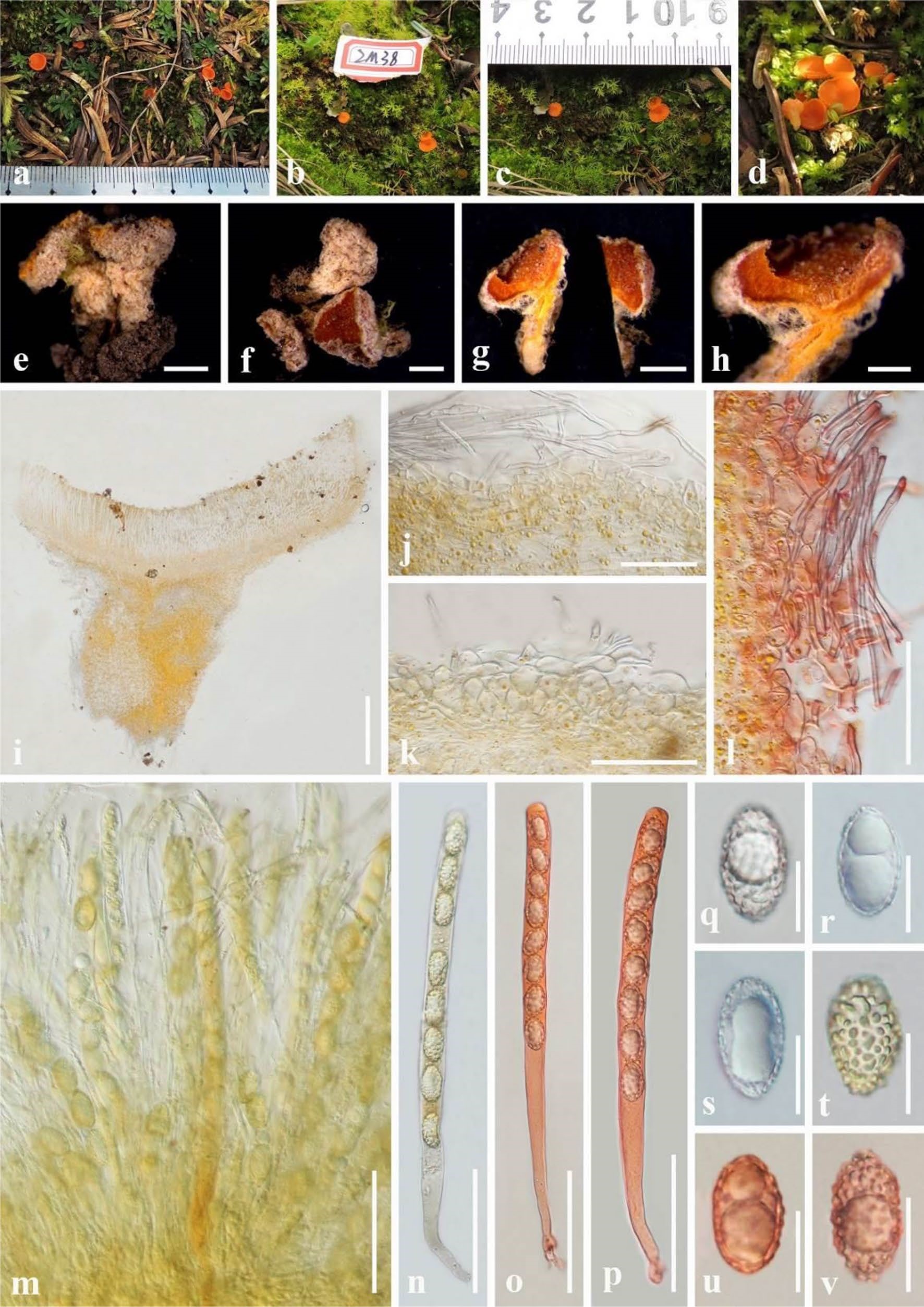
Neottiella gigaspora (HKAS 104669, holotype). a–h Congo Red (n Asci in Melzer’s reagent. o–p Asci in Congo Red). q–v Typic mature specimens. i Vetical section of ascomata. j Stipitipel- Ascospores (t Asci in Melzer’s reagent. u–v. Ascospores in Congo lis. k Receptacle surface of pileus. l Receptacle surface of pileus in Red). Scale bars: e–g = 1000 μm, h-i = 500 μm, j–p = 100 μm, q– Congo Red. m Asci and paraphyses in Melzer’s reagent. n–p Asci in v = 20 μm.


